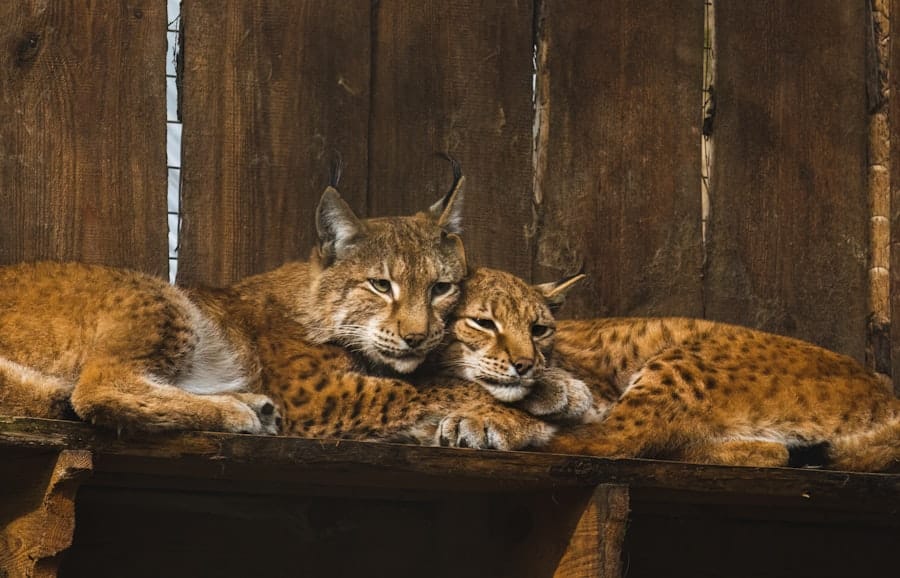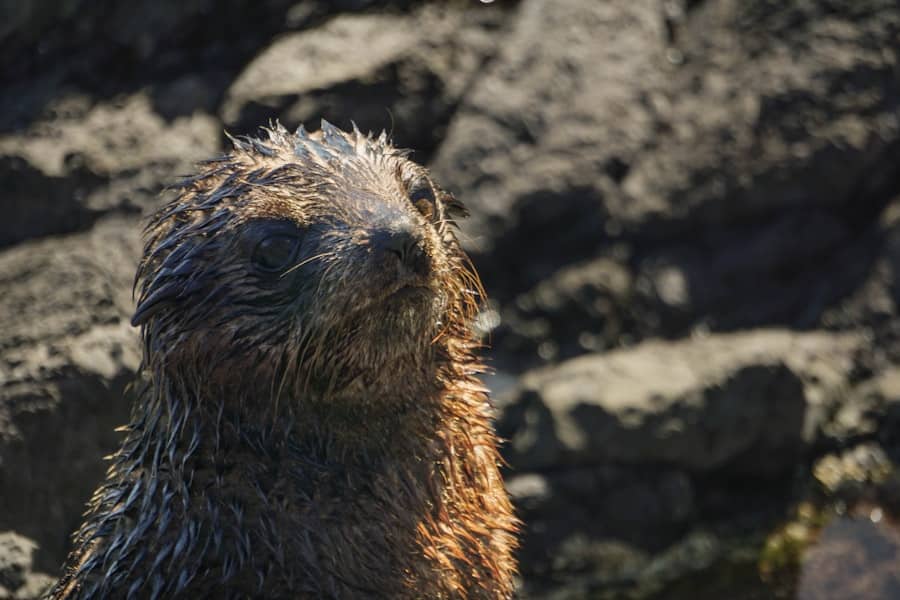Termites, often referred to as the “silent destroyers,” are notorious for their ability to cause significant damage to wooden structures and crops. However, they are not without their own set of natural enemies. Understanding the various predators that target termites is crucial for anyone interested in pest management, ecology, or simply the balance of nature.
These predators play a vital role in controlling termite populations, thereby maintaining ecological balance and preventing infestations that can lead to costly damage. As you delve into the world of termite predators, you will discover a diverse array of species that have evolved unique adaptations to hunt and consume these wood-eating insects. From birds and mammals to fungi and microorganisms, each predator contributes to the intricate web of life that keeps termite populations in check.
By exploring these relationships, you can gain a deeper appreciation for the complexity of ecosystems and the importance of preserving natural predator-prey dynamics.
Key Takeaways
- Birds are natural predators of termites and play a significant role in controlling termite populations.
- Reptiles and amphibians such as lizards and frogs are known to prey on termites, contributing to natural termite control.
- Mammals like aardvarks and anteaters are specialized termite predators, relying on termites as a primary food source.
- Insects such as ants and beetles act as predators of termites, helping to keep their populations in check.
- Fungi and microorganisms play a crucial role in controlling termite populations by infecting and killing termites.
Birds as Natural Predators of Termites
Birds are among the most visible and effective predators of termites. Many species have developed specialized feeding behaviors that allow them to locate and consume these insects with remarkable efficiency. For instance, woodpeckers are particularly adept at extracting termites from their nests in trees.
Their strong beaks enable them to drill into wood, while their keen eyesight helps them spot the telltale signs of termite activity. As you observe these birds in action, you may find it fascinating how they contribute to controlling termite populations in their habitats. In addition to woodpeckers, other bird species such as swallows and starlings also partake in termite feasting.
Swallows often catch termites in mid-air during swarming events, while starlings may forage on the ground for exposed termites. This diverse array of feeding strategies highlights the adaptability of birds as they exploit different aspects of termite behavior. By understanding these interactions, you can appreciate how birds not only serve as pest controllers but also play a crucial role in maintaining the health of their ecosystems.
Reptiles and Amphibians that Prey on Termites

Reptiles and amphibians also contribute significantly to the predation of termites. Many lizards, for example, have developed a taste for these insects, using their quick reflexes and agile bodies to capture them. You might find it intriguing that some species of skinks and geckos actively hunt termites in their nests or during swarming events.
Their ability to blend into their surroundings allows them to ambush unsuspecting termites, showcasing the delicate balance between predator and prey. Amphibians, particularly frogs and toads, also partake in this natural predation. These creatures often consume termites as part of their diet, especially during the rainy season when termite swarms are more prevalent.
The sticky tongues of frogs enable them to snatch termites with remarkable speed and precision. Observing these reptiles and amphibians in action can provide you with a unique perspective on how various species interact within their ecosystems, highlighting the importance of biodiversity in maintaining ecological stability.
Mammals that Feed on Termites
When it comes to mammals that feed on termites, several species stand out due to their specialized adaptations for this diet. The most notable among them is the aardvark, a nocturnal creature known for its long snout and powerful claws. As you learn about aardvarks, you will discover how they dig into termite mounds with ease, using their keen sense of smell to locate hidden colonies.
Their ability to consume large quantities of termites makes them a significant predator in many African ecosystems. Other mammals, such as anteaters and certain species of monkeys, also include termites in their diets. Anteaters possess elongated snouts and long tongues that allow them to extract termites from their nests efficiently.
Meanwhile, some primates have been observed using tools to access termite mounds, showcasing their intelligence and adaptability. By studying these mammals, you can gain insights into the evolutionary strategies that have enabled them to thrive in environments where termites are abundant.
Insects that Act as Predators of Termites
Insects themselves can be formidable predators of termites. Various beetles, ants, and wasps have evolved specific traits that make them effective hunters of these wood-destroying pests. For instance, certain species of ants are known for their aggressive behavior when it comes to raiding termite colonies.
These ants can overwhelm termite defenses through sheer numbers and coordinated attacks, leading to significant reductions in termite populations. Additionally, some beetles have developed a predatory lifestyle centered around termites. The termitophilous beetles often live within termite colonies, where they feed on both the termites themselves and their eggs.
This unique relationship allows these beetles to thrive while simultaneously keeping termite numbers in check. By exploring the world of insect predators, you can appreciate the complexity of interspecies interactions and how they contribute to ecological balance.
Fungi and Microorganisms that Control Termite Populations

Fungi and microorganisms play an essential role in controlling termite populations through various mechanisms. Certain fungal species are known to infect termites, leading to disease and death within colonies. As you delve into this aspect of termite predation, you will find it fascinating how some fungi have evolved specific strategies to target these insects effectively.
For example, the entomopathogenic fungus Metarhizium anisopliae can infect termites upon contact, ultimately leading to their demise. Moreover, microorganisms such as bacteria also contribute to controlling termite populations by producing toxins that can harm or kill these pests. The interplay between fungi, bacteria, and termites highlights the intricate relationships within ecosystems and how even the smallest organisms can have significant impacts on larger populations.
By understanding these dynamics, you can appreciate the importance of microbial diversity in maintaining ecological health.
Plants and Trees that Deter Termites
While many organisms prey on termites, certain plants and trees have evolved chemical defenses that deter these pests from feeding on them. You may find it interesting that some species produce compounds that are toxic or unpalatable to termites, effectively protecting themselves from being consumed. For instance, plants like neem and certain types of eucalyptus contain natural insecticides that repel termites and other wood-boring insects.
Additionally, some trees have developed physical barriers that make it difficult for termites to access their wood. The thick bark or resinous exudates of certain species can deter these pests from tunneling into their trunks. By studying these plant defenses, you can gain insights into how vegetation interacts with insect populations and contributes to overall ecosystem health.
Predatory Nematodes and Parasitic Worms
Predatory nematodes and parasitic worms represent another fascinating aspect of termite predation. These microscopic organisms can be highly effective at controlling termite populations through parasitism or predation. For instance, certain nematodes actively seek out termites in their environment, entering their bodies and causing death through infection.
Parasitic worms may also target termites by infiltrating their colonies and consuming them from within. This unique form of predation showcases the diverse strategies employed by various organisms in their quest for survival. As you explore this realm of tiny predators, you will gain a deeper understanding of how even the smallest creatures can play significant roles in regulating larger populations.
Natural Predatory Behavior and Strategies
The natural predatory behavior exhibited by various species targeting termites is a testament to the complexity of ecological interactions. Each predator has developed unique strategies tailored to its environment and prey’s behavior. For example, ambush predators like certain reptiles rely on stealth and patience to capture unsuspecting termites, while others may employ active hunting techniques.
Social insects like ants demonstrate remarkable teamwork when raiding termite colonies. Their coordinated attacks often involve pheromone trails that guide fellow workers toward food sources. Observing these behaviors can provide valuable insights into the evolutionary adaptations that have allowed different species to thrive in environments where termites are abundant.
The Role of Predators in Controlling Termite Infestations
The role of predators in controlling termite infestations cannot be overstated. By keeping termite populations in check, these natural enemies help prevent extensive damage to structures and crops caused by uncontrolled infestations. As you consider pest management strategies, it becomes clear that fostering healthy predator populations is essential for maintaining ecological balance.
In agricultural settings, promoting biodiversity by encouraging natural predators can lead to more sustainable pest control methods. Rather than relying solely on chemical treatments, integrating natural predation into pest management practices can yield long-term benefits for both crops and ecosystems alike.
Conservation and Management of Termite Predators
Conserving and managing termite predators is crucial for maintaining healthy ecosystems and preventing pest outbreaks. As human activities continue to impact natural habitats through urbanization and agriculture, it becomes increasingly important to protect the diverse array of species that contribute to pest control. You can play a role in this conservation effort by supporting initiatives aimed at preserving natural habitats and promoting biodiversity.
Whether through community engagement or personal choices regarding land use practices, your actions can help ensure that predator populations remain robust enough to keep termite infestations at bay. In conclusion, understanding the myriad predators that target termites provides valuable insights into ecological balance and pest management strategies. From birds and mammals to fungi and microorganisms, each predator plays a vital role in controlling termite populations and maintaining healthy ecosystems.
By appreciating these relationships and advocating for conservation efforts, you contribute to a more sustainable future where nature’s checks and balances can thrive.
Are There Any Natural Predators of Termites That Can Help Control Their Population? explores the possibility of using natural predators to manage termite populations. For more information on effective pest control services, check out the best pest control service in Cape Coral, Florida. This article discusses the importance of professional pest control services in maintaining a termite-free environment.
FAQs
What are natural predators of termites?
Natural predators of termites include ants, certain species of birds, reptiles such as lizards and amphibians, and some species of mammals like aardvarks and armadillos.
How do ants act as natural predators of termites?
Ants are known to be one of the most effective natural predators of termites. They feed on termites and also attack termite colonies, making them an important factor in controlling termite populations.
Do birds prey on termites?
Yes, certain species of birds such as woodpeckers, swallows, and starlings are known to feed on termites. They play a role in controlling termite populations in their natural habitats.
Are there any reptiles that prey on termites?
Yes, some species of lizards and amphibians are known to feed on termites. For example, the Australian bearded dragon is known to consume termites as part of its diet.
Do mammals contribute to controlling termite populations?
Yes, some mammals such as aardvarks and armadillos are natural predators of termites. They use their strong claws and long tongues to dig into termite mounds and feed on the insects.
Can natural predators alone effectively control termite populations?
While natural predators play a role in controlling termite populations, they may not be able to completely eradicate a termite infestation. Integrated pest management strategies that include natural predators along with other control methods may be more effective in managing termite populations.
